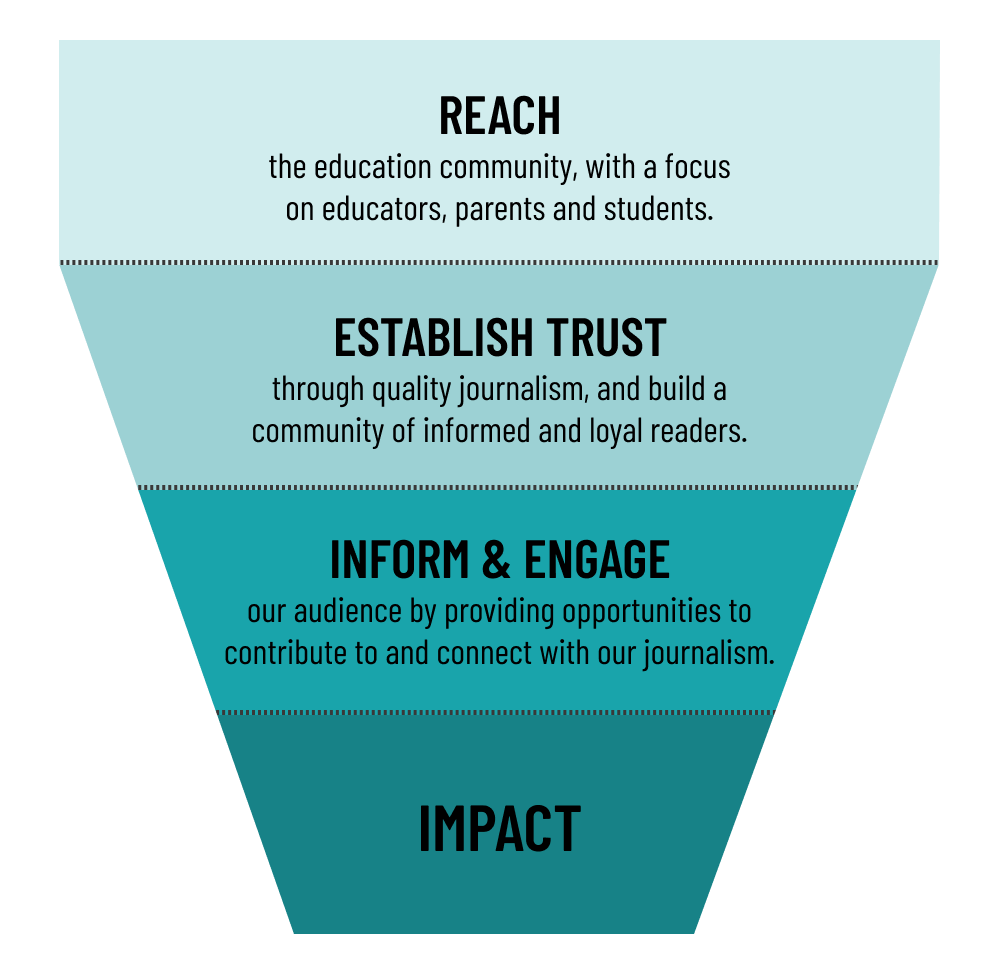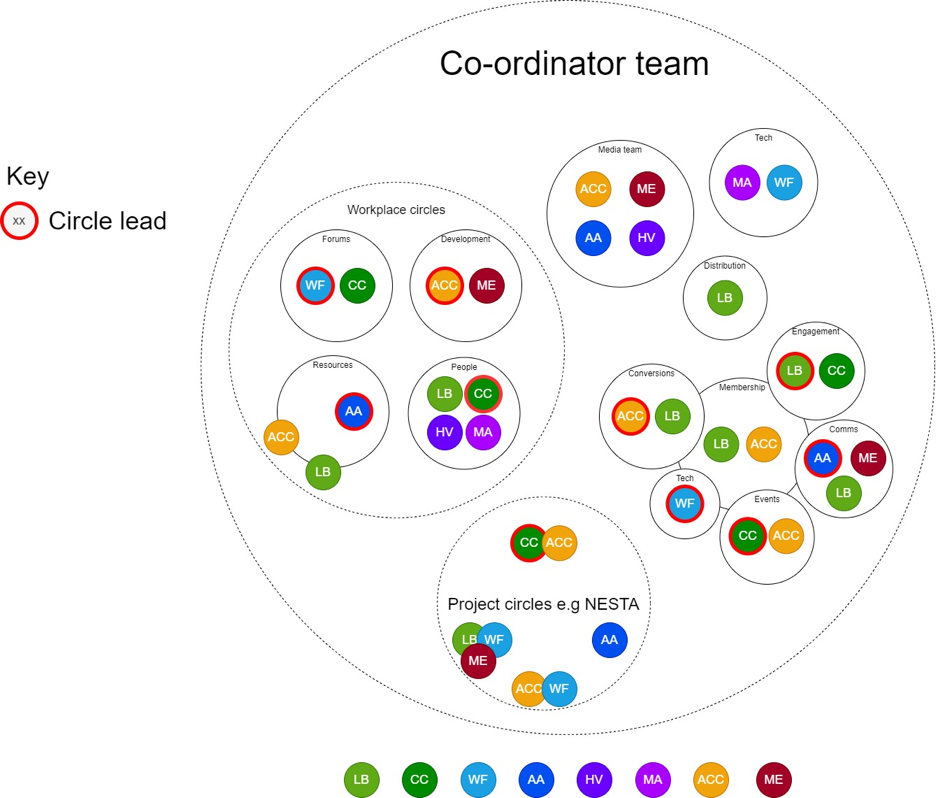Newsroom overview
A Dutch member-driven news organization that brings context to the news by rejecting the daily news cycle and collaborating with their readers.
Amsterdam, The Netherlands
2013
2013
550,000
69,340
53.8 percent*
De Correspondent built a member-financed newsroom from the ground up. Building a company that retains members is something they’ve long practiced across internal teams. But they’ve of course encountered challenges, including in scaling the model globally. The organization has demonstrated the importance of intentionality and organization-wide methods for meeting members where they are at.
The research team explored the daily newsroom routines and external member engagement activities that they’ve found most powerful for keeping members front of mind. Mayke Blok, membership strategist at De Correspondent and The Correspondent, told MPP that “the fact that we started off as a member focused organization really, really helps. So it’s in the DNA. But I think we did stray a bit from what our members thought and wanted for a while and resolved that by getting more in touch with them.” See how they’re doing this now.
*95 percent of De Correspondent’s revenue came from readers in 2019. The remainder came from book sales and donations.
Why this is important
De Correspondent Managing Editor Maaike Goslinga and Conversation Editor Gwen Martèl have both worked at the publication since its early days. In reflecting on what has worked in collaborating with members, they noted, “The most important lesson throughout the years to build a membership-focused newsroom is: don’t consider members as an afterthought, but include them in your daily thinking.”
Editorially, this entails taking the suggestions of members seriously and increasingly responding to member requests for specific information. But that becomes a huge task when your membership program approaches almost 70,000 members.
In its seven years of publishing, De Correspondent has found that it isn’t enough to chase competitors in the Netherlands and around the world and relentlessly publish stories. Among their core principles are “we are your antidote to the daily news grind” and “we collaborate with you, our knowledgeable members.”
The two principles are closely tied. Articles need to reflect correspondents’ unique vantage points and offer members new ways of understanding contemporary problems, often including their expertise. Strategically, this combination helps De Correspondent focus on member retention (as opposed to acquiring new members), with a current organizational goal of maintaining 70,000 De Correspondent members.
What they did
In practice, editorial and membership teams realize the “don’t consider members as an afterthought” goal in a number of forms, starting with strategic staffing or identifying appropriate point people internally. De Correspondent co-founder and CEO Ernst Pfauth identified a trend that’s common in many newsrooms: for organizations with relatively flat hierarchies, it’s easy for responsibilities that seem like everyone’s shared concern to not move forward in the shuffle of day-to-day work.
In response they created a conversation editor role held by Gwen Martèl. Members tell staff that De Correspondent actually feels more personal than when there were fewer members on the platform, thanks in part to the introduction of this role.
As detailed in this post, the conversation editor role involves coaching staff on how to work with members, including:
Efforts to build a member-focused culture from inside the newsroom, such as:
- Transforming lessons learned about member participation into new features for a “member rolodex” and the wider platform.
- Helping correspondents enrich their reporting with members’ knowledge and experiences. Martèl said that for each article or new pitch, “We ask: how can we involve members? It all boils down to the simple realization that members have a lot of knowledge and experience that can be useful for our journalism.”
Improving conversations with members, and their experiences overall, by:
- Bringing more diverse voices to the on-platform comments section
- Inviting members to take part in discussions they’re knowledgeable about
- Organizing dissent
Martèl works closely with Pfauth, who is serving as product owner for De Correspondent’s site and new mobile app. They’re working to ensure that their design and development of features don’t deliver on only a small group of members’ requests. They’re stepping back to see which member voices they’re taking into account when making decisions (and recently have begun other staff projects focused on improving service for specific groups of members, including new members and people whose engagement on the platform have waned).
This is all part of more direct communication practices between staff and members as part of developing “a continuing story with them,” said chief engagement and campaign leader Lena Bril. In the past members have shared their experiences on De Correspondent podcasts and in articles on the platform too, and they’re asked to pose their questions to correspondents and podcast guests in advance of interviews.
More recently, one frequent member request for an audio app with stories read by correspondents crossed the threshold of being potentially useful to many members. The request was included in development of the audio app and the conversation between members and correspondents will feature prominently.
The results
In order to stay member-focused while scaling, De Correspondent has
- Created substantive routines for keeping members in mind throughout a story’s life cycle.
- Started surveying members regularly about their experiences and ideas.
- Added a full time conversation editor whose job it is to enrich the site’s journalism with the knowledge and experience of members (including ensuring that the online comments section is an open and safe space).
- Created a weekly membership metrics and engagement report for all staff and more broadly published member sentiments through all-company Slack channels.
Initiatives that are keeping De Correspondent member-centered are highly grounded in listening to members and reporting insights to colleagues. Bril said the organization is in the habit of talking directly to individual members whenever that feels logical. In general, members are the first to know when there is important organizational news, including new features and correspondents. For the latter, the daily newsletter to members will include a note explaining that the staff would like to introduce members to their new correspondent. Members are regularly thanked in that newsletter for their support and contribution to De Correspondent’s journalism, and they’re encouraged to respond with their feedback.
As detailed in this case study on how De Correspondent refreshed its member insights, De Correspondent surveys its members quarterly in addition to soliciting their thoughts at the beginning and renewal phases of their memberships. The membership team then shares updates on what members have told them, which ultimately helps the rest of the organization understand what is preoccupying their membership at any given time.
Internally, the membership team’s introduction of a weekly membership metrics and engagement report for all staff has been successful. In a monthly presentation to staff the membership team presents the most insightful information from traffic data (pageviews, growth, engagement, requests, and more). The information is also helpful for story sourcing. Recently De Correspondent received many member questions about the workings of 5G connections that resulted in publication of a “super explainer” about the technology. The report was useful in helping identify member interest in 5G that led to the explainer, and when the story was published, members were informed that their request was heard and acted on.
Instead of forwarding individual pieces of member communication only to the most relevant correspondent, engagement staff are now sharing more broadly on relevant general Slack channels. To improve transparency and visibility into members’ reasons for cancelling their memberships, there’s also now a real-time “cancel channel” that’s available to the wider company to watch.
What they learned
The portion of members who care about on-site comments doesn’t represent all readership. Pfauth said that early in De Correspondent’s operations, he was highly focused on the communications that staff, members, and non-members could see: their on-site comments. (The comments sections below correspondents’ articles are accessible for posting by members only, though all readers can see the comments.)
Pfauth has since learned through member research how little many of the organization’s members cared about those comments. Because only a percentage of members said they valued comments on their own, the team now serves a curatorial role in directing members’ attention to those individual comments that are especially meaningful, including through emails to members. Today the engagement team regularly organizes Q&As with relevant invited guests whose contributions may have otherwise been buried deep within the comments.
The team has also learned the value in being flexible around hosting live gatherings. One form of listening that De Correspondent regularly practiced — meeting its members live at in-person events — started to change even before the 2020 coronavirus pandemic kept members at home. The organization previously hosted large live events several times annually, partially to remind staff that they exist because of their members’ financial support and participation. While it created goodwill and community between members and staff, it wasn’t financially viable to keep ticket costs low and host events without sponsorship.
They’ve since had experts join smaller groups of members for 40 or 50 person gatherings (sometimes taking the form of small events and panels at the newsroom) and hosted smaller hackathons that are more focused around De Correspondent’s journalism itself. Pfauth said that with the changing strategy around live events, members see less of staff in real life but that the decision helped the organization be more resource considerate, particularly around use of staff time.
Key takeaways and cautionary tales
Keep members top of mind takes work in a mature member-driven newsroom. When your membership program reaches the size of De Correspondent’s, it can be easy to let it run on autopilot. Instead, De Correspondent hired a conversation editor and implemented several new newsroom processes, including a real time “cancel channel,” to ensure the whole newsroom continues to keep members on their mind.
Other resources
- Ernst Pfauth, Medium: Reinventing the Rolodex: Why we’re asking our 60,000 members what they know
Disclosure: De Correspondent is a founding partner of Membership Puzzle Project.



